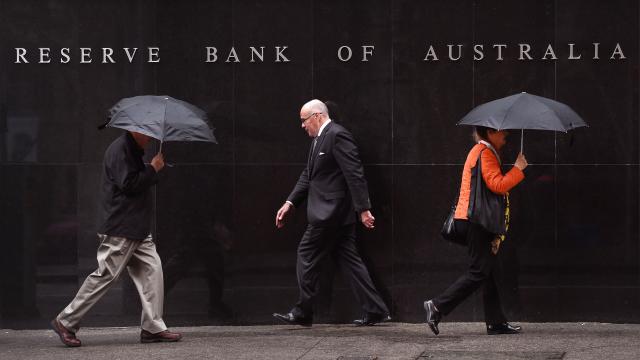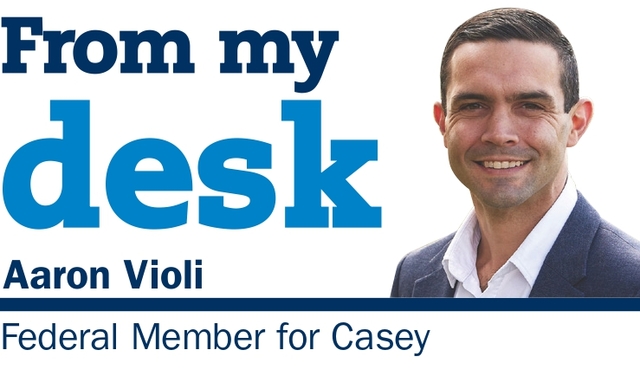Australians are wary that the Government and Reserve Bank of Australia (RBA) will be able to ease inflation and cost of living pressures in 2023 with 44 per cent of Australians having a vote of no confidence, according to the sixth annual Consumer Pulse Report from Canstar.
The Report compiled by Australia’s biggest financial comparison site¹, reveals the nation’s biggest hip pocket pain points, debt and savings position and property market prospects for the year ahead, based on the opinions from 2,157 Australian adults.
The national findings released today found a further 19 per cent are somewhat confident that inflation will be eased and 27 per cent feel slightly confident while only nine per cent of Australians have a high degree in confidence.
“The nation is speaking about its concern for the year ahead and whether people have faith in the Government’s and Reserve Bank’s ability to gain control of inflation and bring down living costs in 2023,” Canstar’s finance expert, Steve Mickenbecker said.
“Females are more pessimistic than males that costs will come down, with more than half – 51 percent – of Australian women saying they are not confident the Government and Reserve Bank will be able to make a difference compared to 37 percent of men.
“Even among those who are more optimistic, half only describe themselves as slightly confident.
“The Reserve Bank expects inflation to peak at over 8 percent in December, a number that if sustained could do severe damage to the economy and peoples’ living standards for quite a while to come. It would also mean further home loan interest rate rises into the future, which will be particularly damaging to potential first home buyers.”
Inflationary pressures are dominating Australians’ financial worries, with 59 per cent of people citing the cost of groceries, rent, electricity and gas, interest rates or petrol as their number one concern for 2023.
“The mix has changed from an overwhelming concern in previous years about the cost of electricity and gas and is now more evenly spread. This is in spite of Australians reporting their average quarterly electricity bill has risen by 4.5 percent over the year to reach $371 while their gas bill has gone up 13 percent over the same period and is now on average $265 per quarter,” says Mickenbecker.
“Just putting food on the table is Australians’ number one worry next year and rightly so with more than two-thirds – 67 percent – of Australians reporting their average weekly spend at the grocery store has increased as a result of rising prices. A further 26 percent have found a way to keep the cost down, by buying less, choosing cheaper options or shopping for discounted prices.
“Most Australians have come to realise that the days of ballooning wealth from rising property prices and rampant discretionary spending, both courtesy of low interest rates and inflation, are behind them for now. We are living in an alien era of austerity that was owned by prior generations.”
Real estate rocked by interest rate rises yet few mortgage holders cutting their costs
Inflation is also hitting housing costs with the cost of rent the second biggest money worry for 2023 and rising mortgage interest rates making the top five list of financial concerns for the first time since 2019.
“The most startling find when it came to mortgage holders coping with higher interest rates is worryingly almost one in two – 48 percent – of homeowners with a mortgage and 37 percent of investors with a loan are unsure how much their mortgage interest rate has risen since the Reserve Bank started aggressively lifting interest rates in 2022,” says Mickenbecker.
When asked how prepared they are for even higher interest rates, close to two-fifths (39 per cent) of homeowners and more than one-quarter (27 per cent) of investors are not prepared. The majority of these indicated they would need to cut their living costs further to make ends meet.
“The cash rate could reach as high as 3.85 percent next year, pushing the average variable rate for existing borrowers up to 6.73 percent and adding since April more than $1,130 to monthly repayments on a $500,000 loan over 30 years,” says Mickenbecker.
“The repayment increase is a considerable amount for any household to fork out and while cutting back might help, one of the best ways for mortgage holders to prepare for even higher interest rates is negotiating a lower rate with their lender or switching in chase of a better deal.”
The Report found just a small proportion of mortgage holders (15per cent) have switched lenders in the past year and secured a better deal while only eight per cent tried and failed. This means 77 per cent of borrowers could potentially be paying a lot more for their loan than what is on offer in the market today.
“It’s disappointing that borrowers are not more engaged with getting a better deal, either from their own bank or by switching banks. Most borrowers are paying interest rates well above the relatively low rates being offered to new customers, and the monthly savings are too big to ignore,” says Mickenbecker.
“Borrowers can’t wait until they are unable to pay the bills to refinance into a lower rate loan. By then their desperation will be matched by lender aversion and they may find themselves out of luck with new lenders.”
Property owners considering selling
Close to one-third (31 per cent) of property owners say they are considering selling their home or investment property in the next few years. It is not just mortgage holders struggling with higher interest rates who are contemplating putting their property up for sale, with upsizing being the leading cause followed by downsizing. Rounding out the top three reasons is being unable to afford higher loan repayments.
Property owners selling up in the next two years may be doing so in a falling market. Reserve Bank modelling predicts house prices could fall 20 per cent nationally by the end of 2024 but Australians seem to be more optimistic.
“When asked if they are concerned about property prices falling in the next two years, almost half – 49 percent – say no, 15 percent are unsure and only just over one-third – 36 percent – of respondents say they have some worry and will reconsider some decisions relating to accessing their equity, buying an investment property, planning for retirement and their investment strategy,” says Mickenbecker.
“In fact nearly two-thirds – 60 percent – of respondents expect house prices in their state to remain stable, grow or possibly even skyrocket at some point before the end of 2024.
“Given the contrary view of many property market experts, the confidence Australians have in stable or growing property prices is surprising. Perhaps the opinion reflects a long-term rosy view of property, which is held by the almost 70 percent of homeowners not planning to sell in the next few years.”
More parents on the hook to help kids tackle property prices
Hoping to snap up some of the property sales are potential first home buyers with the help of their parents. A growing number of Australians feel parents have an obligation to help their children buy their first home, up from 21 per cent last year to 24 per cent in 2022.
The best way for parents to support their children to buy a home is with financial education, according to 22 per cent of Australians. This is hailed by all generations apart from Baby Boomers who feel the best support is contributing to the deposit.
Monetary support closely follows financial education, including contributing financially to the deposit (19 per cent), offering rent-free accommodation (16 per cent), going guarantor on the loan (13 per cent), contributing to living costs (8 per cent) and buying with them (6 per cent). A further 16 per cent are unsure or have other ideas on how to help.
“Intergenerational equity is concerning Australians of all ages, with parents worrying that their children will not be able to afford the same access to home ownership they enjoyed. The good news is that there are many ways that parents can help even if they don’t have a mountain of savings,” comments Mickenbecker.
“For a lot of families that might include helping to boost potential first home buyers’ savings by offering rent-free or reduced rent for adult children residing at the family home for longer. However, findings from the Consumer Pulse Report show the average age Australians feel is too old for an adult child to be living at home has dropped to just 26 years of age, a significant fall from previous years where the average age was around 30 years.
“Being cooped up during lockdowns looks to have tested our tolerance for sharing with multiple generations of adults. Potential first home buyers moving out of the family home earlier will only aggravate low vacancy rates and rent pressures as we move to a period of renewed immigration and tourism.”
Debt levels have dropped and could ease the pain for some but our ability to save is suffering
More Australians are carrying debt outside of a mortgage than in recent years with an increase to 39 per cent of respondents, up from 29 per cent carrying debt in 2021 and 28 per cent in 2020.
The positive news is the average amount of debt Australians carry outside of a mortgage has significantly dropped from an average debt of $46,020 in 2021 down to just $13,312 this year. Credit cards remain the main culprit and Canstar research shows making the minimum repayments on a credit card debt of $13,312 would take almost 78 years to repay and cost more than $30,450 in interest based on the average credit card interest rate on Canstar’s database of 17 per cent².
“Australians typically take on debt to purchase new cars and to fund overseas holidays. With waiting lists for new cars and Covid travel risks and restrictions, demand for big-ticket debt will have been subdued during 2022, so that the average amount of lending has fallen,” says Mickenbecker.
“However, the concern is that more Australians are in debt for smaller ticket items, perhaps forced to resort to the credit card to meet the cost of living.”
Paying down debts and coping with rising living costs has impacted Australians ability to save. The cost of living crisis has already cracked open many piggy banks with 38 per cent of Australians reporting they have dipped into their savings this year.
More than three-quarters (77 per cent) of Australians are able to save money each month, saying they are putting aside an average of $393. However, this is considerably less than last year when savers said they were able to put aside $671 per month in 2021, a massive 41 per cent fall year on year.
“With the full force of interest rate increases yet to take its toll, borrowers in particular look to be on a knife-edge, and have limited buffer. A worthwhile New Year’s resolution for Australians might be to sit down and do a refresh of their household budget to work out a way to restore their financial resilience,” says Mickenbecker.
Hunkering down for tough times ahead but won’t give up on a holiday in 2023
Australian savers are preparing for higher living costs and unexpected expenses in 2023 as these are two of the top three expenses people are saving for right now.
It is the third consecutive year that living costs have topped the list of major expenses Australians are saving for. However, this marks only the second year that building a rainy day fund for unexpected expenses has made an appearance in the top three. Hunkering down for tougher times ahead is a major motivation.
Sandwiched in the middle of these serious financial goals is saving for a holiday.
“Interest rate increases have a two-speed impact. Those with high debt have to tighten the belt, while the group who have been repaying a loan for many years are often able to get on with their lives without as much as a pause and without interrupting their holiday plans,” says Mickenbecker.
“Travellers are faced with higher airfare prices thanks to surging fuel costs and pent-up demand and adding to holiday costs is the rising cost of travel insurance. Canstar’s recent research shows international travel insurance costs have increased by 50 per cent since pre-Covid 2019. All of this makes taking a holiday a big cost consideration for Australians in the new year.”
To download the free Canstar Consumer Pulse Report, visit Canstar.com.au/consumer-pulse-report.







